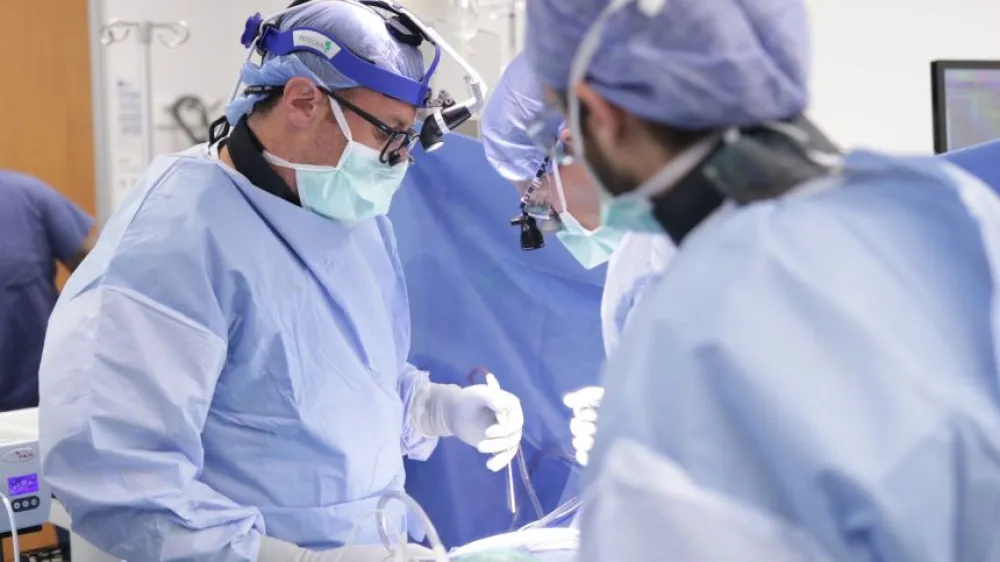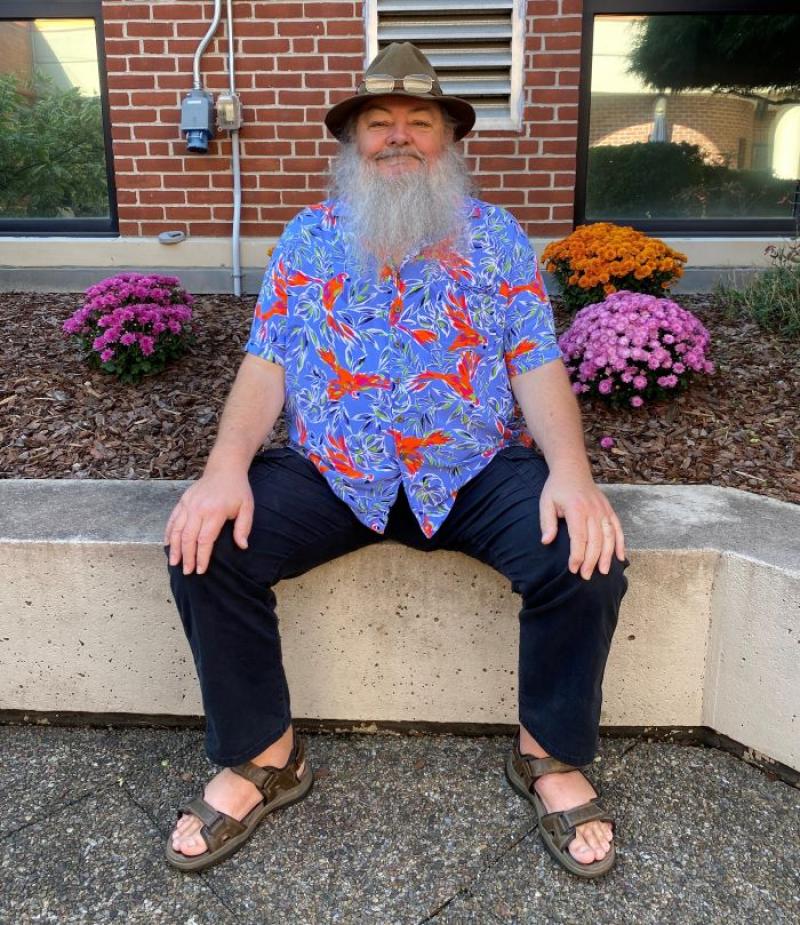Providing your location allows us to show you nearby locations and doctors.
Nuvance Health first in Connecticut to perform new spine surgery for spinal stenosis and spondylolisthesis

10/05/2023
A new procedure for lower back problems can stabilize the spine and preserve motion without fusing vertebrae together. The first person in Connecticut to have the procedure said, “I have regained my life.”
A Nuvance Health neurosurgery team performed the first joint replacement spine surgery in Connecticut on September 5, 2023, at Danbury Hospital. Fellowship-trained neurosurgeon Dr. Joshua Marcus performed the procedure using the Total Posterior Spine Surgery (TOPS™) System.
TOPS offers an alternative to spinal fusion surgery for certain people with stenosis, spondylolisthesis and related spine conditions in the lower back. The procedure can relieve the debilitating symptoms of these back problems, stabilize the spine and maintain a normal range of motion without fusing the bones of the spine together.
Spinal stenosis happens when the spinal column narrows, usually from osteoarthritis — the most common form of arthritis. Spondylolisthesis happens when one of the bones in the spine, called a vertebra, slips forward. Both spinal stenosis and spondylolisthesis in the lower back can put pressure on the nerves and cause pain, numbness and weakness in the legs.
Until now, spinal fusion surgery was the main surgical option to relieve stenosis or spondylolisthesis symptoms. During the procedure, a spine surgeon alleviates the pressure on the nerves and then fuses the vertebrae together to prevent them from moving. Spinal fusion surgery is a necessary procedure to maintain someone’s quality of life, although it may affect the range of motion in the back.
Spinal fusion may be an option for people who need more stability in their spine, whether from age-related or traumatic injuries, loss of stability from the operation or to adequately free up the nerves.
For other people, TOPS can achieve the same symptom relief of a fusion while maintaining their ability to move their back normally, including flexion, extension, side bending and rotation. Instead of permanently locking together vertebrae with a fusion, the spine surgeon allows the vertebrae to continue moving with the assistance of a device.
The device not only facilitates bending, twisting and straightening movements but also lessens the pressure on other areas of the spine. Unlike spinal fusion, which can add stress to adjacent levels of the spine, the device maintains mobility, which may help prevent possible future problems.
“We are excited to offer a new surgical option for people with stenosis or spondylolisthesis that can help them regain their ability to move normally without pain,” Dr. Marcus said. “Our goal is to get people back to enjoying the daily activities that were so difficult to do before surgery.”
Clarence Shrack was the first person in Connecticut to experience TOPS for spinal stenosis. The 61-year-old from New Milford was in pain for one-and-a-half years before surgery.
“The sharp pain radiated down my lower back to my right knee. It was like having a profound toothache in my leg. It was ridiculous!” Clarence said.
“It was very hard to walk and move around. I was in pain, even when I was sitting down. My independence was limited, and my wife had to help me do things around the house,” Clarence said. “It was annoying and frustrating because I have always been able to take care of myself.”
Clarence said he was interested in the joint replacement option because he does physical work. He fixes cars and recently bought a fixer-upper house. He also enjoys taking road trips, camping and walking his dogs.
“The leg pain was gone right after surgery. It has been a few weeks since surgery and I am practically dancing,” Clarence said. “I have had back problems for nearly four years, and I have more range of motion and flexibility now than even before surgery.”
TOPS may be an option for people between the ages of 35 and 80 with moderate to severe lumbar spinal stenosis or degenerative spondylolisthesis that causes lower back pain, sciatica, numbness, tingling, burning sensation, or radiating leg pain that does not improve with anti-inflammatory medication or muscle relaxants, local treatment such as heat or ice, or physical therapy.
Find a Nuvance Health back and spine specialist
The neurosurgeons at Nuvance Health have been leading advances in spine care. Earlier this year, Danbury Hospital became the first hospital in Connecticut to perform a robotic prone lateral surgery for people with spinal stenosis and disc herniation. The operation results in a shorter surgery time, less fluoroscopy and radiation during surgery, and faster recovery.
TOPS surgery is available at Nuvance Health’s Danbury Hospital, Norwalk Hospital and Vassar Brothers Medical Center.
Learn more about back and spine surgery at Nuvance Health Neuroscience Institute.
